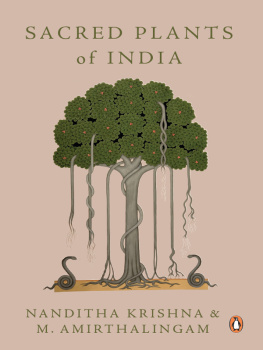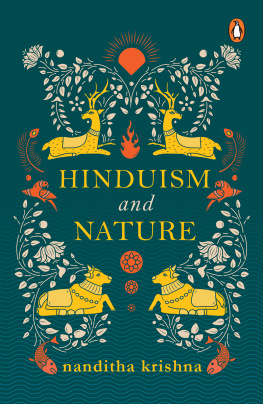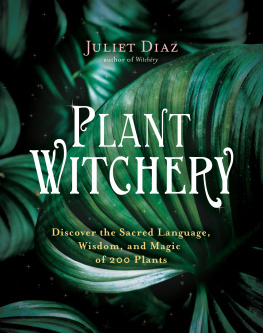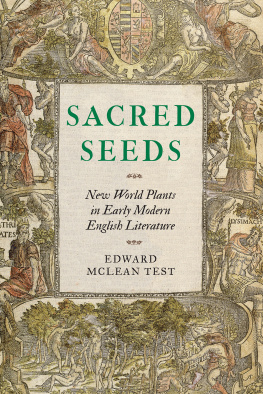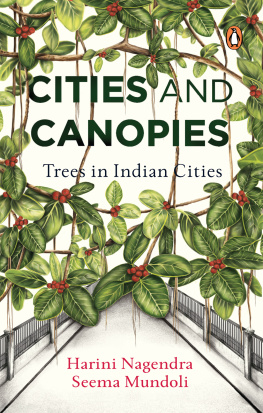PENGUIN BOOKS
Published by the Penguin Group
Penguin Books India Pvt. Ltd, 7th Floor, Infinity Tower C, DLF Cyber City, Gurgaon 122 002, Haryana, India
Penguin Group (USA) Inc., 375 Hudson Street, New York, New York 10014, USA
Penguin Group (Canada), 90 Eglinton Avenue East, Suite 700, Toronto, Ontario M4P 2Y3 , Canada
Penguin Books Ltd, 80 Strand, London WC2R 0RL , England
Penguin Ireland, 25 St Stephens Green, Dublin 2, Ireland (a division of Penguin Books Ltd)
Penguin Group (Australia), 707 Collins Street, Melbourne, Victoria 3008, Australia
Penguin Group (NZ), 67 Apollo Drive, Rosedale, Auckland 0632, New Zealand
Penguin Books (South Africa) (Pty) Ltd, Block D, Rosebank Office Park, 181 Jan Smuts Avenue, Parktown North, Johannesburg 2193, South Africa
Penguin Books Ltd, Registered Offices: 80 Strand, London WC2R 0RL , England
www.penguinbooksindia.com
First published by Penguin Books India 2014
Copyright Nanditha Krishna and M. Amirthalingam 2014
The views and opinions expressed in this book are the authors own and the facts are as reported by them which have been verified to the extent possible, and the publishers are not in any way liable for the same.
Cover: Shiva (2009) by Olivia Fraser
All rights reserved
ISBN: 978-0-143-06626-2
This digital edition published in 2013.
e-ISBN: 978-9-351-18691-5
THE BEGINNING
Let the conversation begin...
Follow the Penguin Twitter.com@PenguinIndia
Keep up-to-date with all our stories YouTube.com/PenguinIndia
Like Penguin Books on Facebook.com/PenguinIndia
Find out more about the author and
discover more stories like this at penguinbooksindia.com
PENGUIN BOOKS
SACRED PLANTS OF INDIA
Nanditha Krishna is a historian, environmentalist, and writer based in Chennai. A PhD in ancient Indian culture, she is the director of the C.P. Ramaswami Aiyar Foundation and C.P.R. Environmental Education Centre. She has pioneered the documentation of the ecological traditions of India, restored over fifty sacred groves, and established schools, the C.P.R. Indological Research Centre, and Shakunthala Jagannathan Museum of Folk Art. Her published works include Sacred Animals of India, Book of Demons, Book of Vishnu, Madras Then Chennai Now, Balaji-Venkateshwara, Ganesha, Painted Manuscripts of the Sarasvati Mahal Library, Arts and Crafts of Tamilnadu, and Art and Iconography of Vishnu Narayana, besides numerous research papers and newspaper articles. She is a professor and research guide for the PhD programme of the University of Madras and has received several prestigious national and international awards.
M. Amirthalingam is a botanist and environmental education officer at C.P.R. Environmental Education Centre, Chennai. He has researched and published the books Sacred Groves of Tamil Nadu, Sacred Trees of Tamil Nadu, Temple Tanks of Chennai, and Flora and Fauna of Valmikis Ramayana, besides research papers and articles in various journals, magazines, and seminar proceedings. He is currently working on the All India Coordinated Research Project on Sacred Grove Ecosystem Service Assessment in the Inland Plains of Tamil Nadu sponsored by the ministry of environment and forests, Government of India.
In memory of Shakunthala and A.R. Jagannathan, a source of inspiration, encouragement, and love
Foreword
India is a highly biodiverse country and at least four major factors are responsible for our rich endowment of plant and animal genetic resources. These are: cultural diversity (including spiritual values), culinary diversity, curative diversity (a wide variety of medicinal plants), and ecosystem diversity. Among these factors, spiritual values have contributed much to saving many important plants and trees. This book contains a fascinating account of numerous sacred trees and groves. The book also describes the efforts made from ancient times to invest on selected trees a sacred aura. The sthala vriksha is a good example of this tradition of celebrating our biological heritage.
While reading this book, I was reminded of the following poem by Joyce Kilmer:
I think that I shall never see
A poem as lovely as a tree.
A tree whose hungry mouth is prest
Against the earths sweet flowing breast;
A tree that looks at God all day,
And lifts her leafy arms to pray;
A tree that may in summer wear
A nest of robins in her hair;
Upon whose bosom snow has lain;
Who intimately lives with rain.
Poems are made by fools like me,
But only God can make a tree.
In 1976, I undertook a study of the oldest trees of India. I wrote to the Chief Conservators of Forests of all states and requested information on the oldest living tree in their state. Most of the replies related to banyan trees including the famous banyan tree of the Theosophical Society, Chennai. Several of the famous banyan trees were also associated with saints and temples. Temple trees such as Excoecaria agallocha of the famous Nataraja Temple at Chidambaram have probably been worshipped because of their importance to life and livelihoods. For example, the temple tree of Chidambaram, which is a mangrove, might have been chosen because mangroves serve as bioshields against coastal storms and tsunamis.
My study of the oldest tree of India revealed that a tree belonging to the species Morus serrata may be the oldest one (over 1200 years). Adi Shankara meditated beneath this spectacularly large mulberry tree in the valley of Joshimath. The age of this tree could be measured only from the year when Adi Shankara preached under it. Thus, there has been a strong correlation between our spiritual history and the history of sacred trees (Indian Farming, February 1977). We owe a deep debt of gratitude to Nanditha Krishna and M. Amirthalingam for capturing the wonderful biological and spiritual heritage of our country in this beautiful book.
Chennai
PROFESSOR M.S. SWAMINATHAN
Chairman
C.P.R. Environmental Education Centre
Authors Note
When I wake up in the morning and look out of my window, the first thing I see is a cannonball tree with its unkempt stalks weighed down by clusters of flowers, standing on a bed of fallen flowers, which my gardener carefully collects and puts in a wide bowl of water on the dining table. This is intended to be a stress reliever, for such is the quality of the cannonball flower.
I was born in an old colonial bungalow on an ancestral property known as The Grove in Madras. At the end of the long garden there was, and still is, an ancient pipal tree, beneath which are five snake stones of different shapes and sizes, installed between 1903 and 1905 by my great grandmother, and a Ganesha relief dating back to the late Pallava period. Every day, my morning walk begins with a circumambulation of the pipal tree, the Ganesha, and the snake stones. I remember the days when the new moon arrived on a Monday, and a crowd of women from Teynampet village gathered to circumambulate the tree 108 times. My grandmother had taken the vow too, but, in view of her ill health, I would circumambulate the tree while she sat, prayed, and meditated beneath the pipal tree. And the ubiquitous tulsi still sits proudly in the centre of the open courtyard, within the house. Thus the sacred plants of Indias hoary past have been a part of my own personal tradition and it was inevitable that further research on this subject was essential to comprehend our great inheritance.

